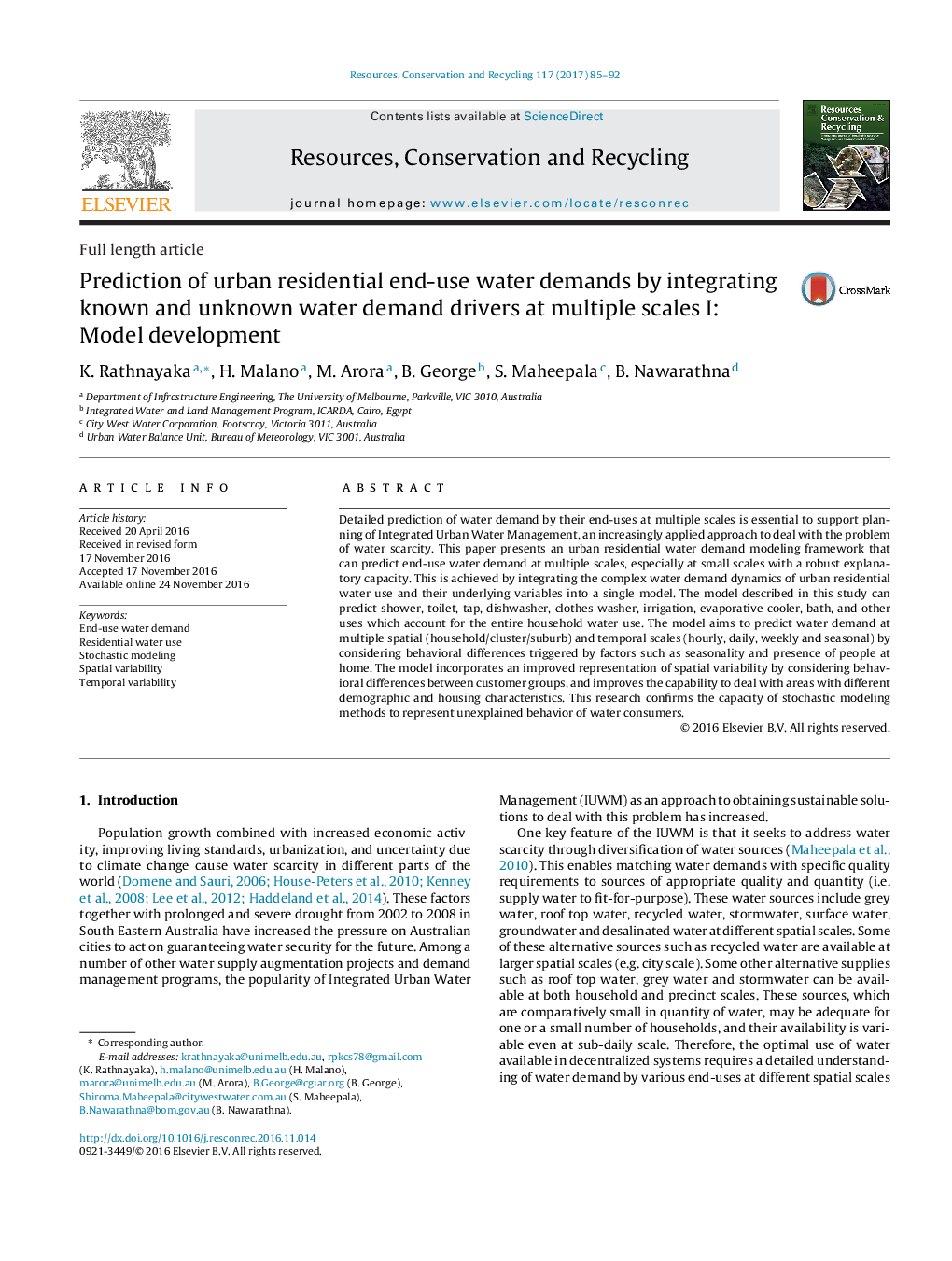| کد مقاله | کد نشریه | سال انتشار | مقاله انگلیسی | نسخه تمام متن |
|---|---|---|---|---|
| 5118889 | 1378185 | 2017 | 8 صفحه PDF | دانلود رایگان |

- An improved end-use water demand model was developed.
- The model intends to predict at multiple spatial and temporal scales.
- The model considers known water demand determinants and unexplained behavior.
- The model can be used to predict peak water demand for residential water end-uses.
- The paper also assesses the impacts of structural and demographic factors.
Detailed prediction of water demand by their end-uses at multiple scales is essential to support planning of Integrated Urban Water Management, an increasingly applied approach to deal with the problem of water scarcity. This paper presents an urban residential water demand modeling framework that can predict end-use water demand at multiple scales, especially at small scales with a robust explanatory capacity. This is achieved by integrating the complex water demand dynamics of urban residential water use and their underlying variables into a single model. The model described in this study can predict shower, toilet, tap, dishwasher, clothes washer, irrigation, evaporative cooler, bath, and other uses which account for the entire household water use. The model aims to predict water demand at multiple spatial (household/cluster/suburb) and temporal scales (hourly, daily, weekly and seasonal) by considering behavioral differences triggered by factors such as seasonality and presence of people at home. The model incorporates an improved representation of spatial variability by considering behavioral differences between customer groups, and improves the capability to deal with areas with different demographic and housing characteristics. This research confirms the capacity of stochastic modeling methods to represent unexplained behavior of water consumers.
Journal: Resources, Conservation and Recycling - Volume 117, Part B, February 2017, Pages 85-92